By: Rob Ptacek and Jaideep Motwani (Ph.D)
Note: Currently out of stock. Orders placed today will ship within 2 weeks!
Pursuing Perfect Service is a comprehensive and detailed set of instructions on how to implement Lean and Six Sigma tools and concepts in a variety of environments. It will provide the solid foundation upon which Lean Sigma tools can be applied in any service organization. Service providers are continually processing daily requests and must know how to identify client needs and expectations, how to best satisfy their needs, and how to do it at the lowest possible cost. This book is a step-by-step implementation guide for continuous improvement while creating a solid foundation upon which to build a service excellence culture. Pursuing Perfect Service also provides insights and examples on how Information Technology can be used to improve data and information flow to enhance the overall client experience, while ensuring organizational profitability.
This book has been arranged into four distinct parts. To transform an organization from a traditional service provider to a Lean Sigma for Service Excellence provider, it is recommended that the book be followed in order, from Part One to Part Four. However, it may be useful to review Chapter 10, Transformation Case Study, as it chronicles one company’s journey using this approach or methodology. The four parts are:
Part One. Setting the Foundation for Lean Sigma for Service Excellence. This part is comprised of two chapters. In chapter one, the readers will be provided with an overview of service organizations and why it is critical for them to achieve excellence. This will be followed by a discussion, in chapter two, of how an organization can achieve excellence by applying the Lean Sigma methodology. By explaining the basic tools and concepts of Lean and Six Sigma, understanding how behavior and change must occur, and determining what measurements and outcomes are critical, will set the foundation for the Lean Sigma journey.
Part Two. Beginning the Lean Sigma for Service Excellence Journey. This part is comprised of one chapter that focuses on the four enablers of Lean Sigma and the steps required to build a solid foundation. In order for the Lean Sigma initiative to be successful, all four enablers need to be actively present within an organization.
Part Three. Deploying the Lean Sigma for Service Excellence Improvement Process. This part is comprised of five chapters and demonstrates through detailed explanation of the tools, as well as case study examples, on how the Six Sigma’s DMAIC methodology can be applied in service industries. Creating processes that allow customer expectations and organizational services to be free of waste will create the foundation for business success. This will entail obtaining detailed analysis of current processes, creating standards to adhere to, and balancing workloads evenly to meet each and every customer demand. This is the heart of Lean Sigma and will take the most time to implement.
Part Four. Putting it All Together to Achieve and Sustain Lean Sigma for Service Excellence. This part is comprised of two chapters. This part is comprised of two chapters. The first chapter provides definition and guidance for becoming a sustainable organization. Sustainability is defined in terms of global impact in environmental, economic, and social areas. A plan to reduce environmental impact is often called “becoming green.” True sustainability goes beyond the environmental impact only and also considers economic and social areas. This chapter defines the Triple Bottom Line for sustainability, and also details some basic tools for becoming green. The second chapter details an organizational transformation of a traditional service provider to a Lean Sigma for Service Excellence organization. The case provides valuable insights into how Lean Sigma transformations take place from an initial assessment, through project selection and tool implementation, to a complete organizational Lean Sigma transformation. The case chronicles the trials and tribulations an organization may face during their transformation journey, and can be used to help readers navigate their own Lean Sigma transformation.
The distinctive features of the book are as follows:
Tools focused – Throughout the book basic and advanced tools are discussed that can be adopted by service organizations. Each tool there is a brief discussion, a service-related example, at times step-by-step instructions, and many times an example of that tool in the end-of-the-chapter case study. It is expected that this will provide you will enough relevant content to tackle 80% of your issues and problems within your service organization.
Note:
Many of these forms, charts, etc. were developed in Microsoft Excel. Detailed steps for creating many of the forms, maps, and charts can be found in The Lean Desktop and Networking Pocket Guide XL and iLean (available at amazon.com and theleanstore.com). Also, for many of the topics discussed throughout this book there are numerous books and information available via the Internet for additional information.
Case Studies – Throughout the book real-world short case studies are presented to show readers how different tools were successfully applied by different types of service organizations. Each case study presented at the end of each of the main five chapters will accentuate that chapter’s DMAIC Phase.
Chapter Readiness Guides – There is a 20-question Readiness Guide at the end of each chapter. The purpose of the assessment is two-fold: first, it should be used to find out the extent the tools and techniques discussed in the chapter are currently being applied at the respondent’s organization, and second, it should be used to gauge the comfort level of the respondent’s knowledge and understanding of the concepts and tools in the chapter. For implementation purposes we recommend completing the individual chapter Readiness Guide before moving on to the next chapter or Phase.
Comprehensive Case Study – In chapter 10, a comprehensive real-world transformational case study is provided that documents an organization’s transformation from a traditional service provider to a Lean Sigma service provider. This case study highlights the high level road map, tools, processes, and steps that any service organization can follow to achieve excellence.
Lean Sigma for Service Excellence Assessment and Gap Analysis – In addition to the Readiness Guides at the end of each chapter, we also provide and recommend that the readers conduct an initial comprehensive Lean Sigma for Service Excellence Assessment and Gap Analysis that is discussed in Chapter 3 (with the complete Assessment provided in the Appendix). This Assessment will assist a team in specific functional areas that Lean Sigma tools may assist the organization. There is also a suggested course of action for any lower scoring areas. We strongly encourage you to complete this assessment prior to any Lean Sigma project.
Non-Technical – This book is designed to be non-technical in nature. Though we use, illustrate, and recommend the application of quantitative techniques for Lean Sigma application, we strongly believe that the systematic, practical approach using Lean tools with the D-M-A-I-C methodology can be implemented with minimal training and resources.
Tool Applications – There are many Lean Sigma tools described in this book; however the list is not all inclusive. New ways of applying the tools are developing every day and continual learning and investigation is encouraged. To assist readers in finding specific tools in the book, we offer the following table on the next page that have the tools organized by the DMAIC phases. Even though this table has the tools listed in “an” order, there is no exact order for implementation. By following the DMAIC process and reading this book, practitioners will better understand where and when to apply the tools.
Perfect Bound, Paperback – 5.5″ x 7.5″ – 400+ pages – Forms, Worksheets, Macro Examples Throughout, Lean Sigma for Service Excellence Assessment and Gap Analysis, Advanced Case Studies, etc.

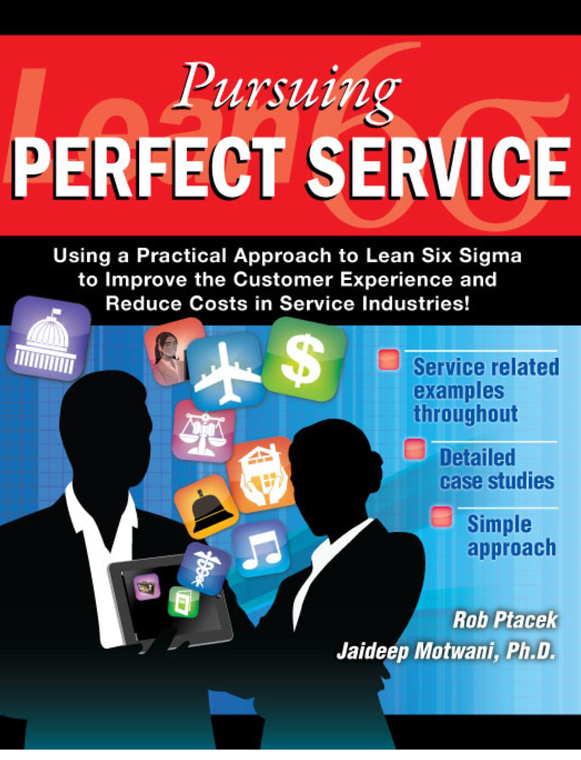
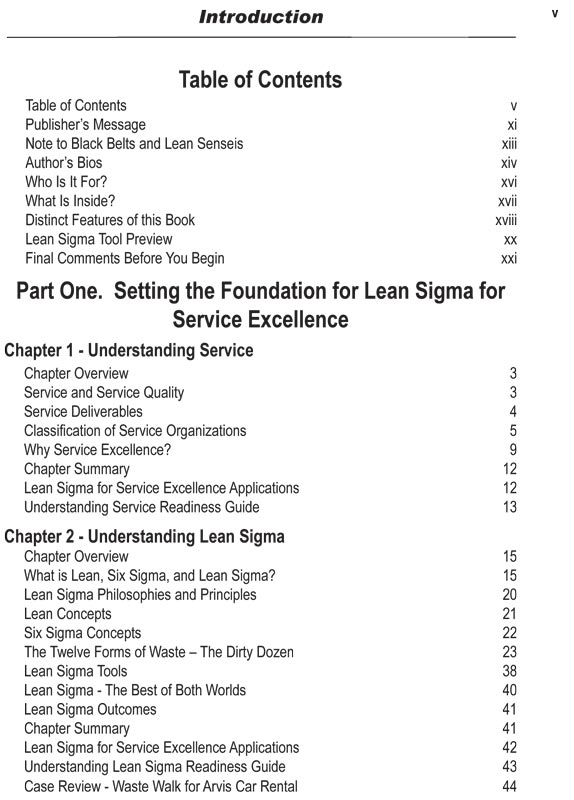
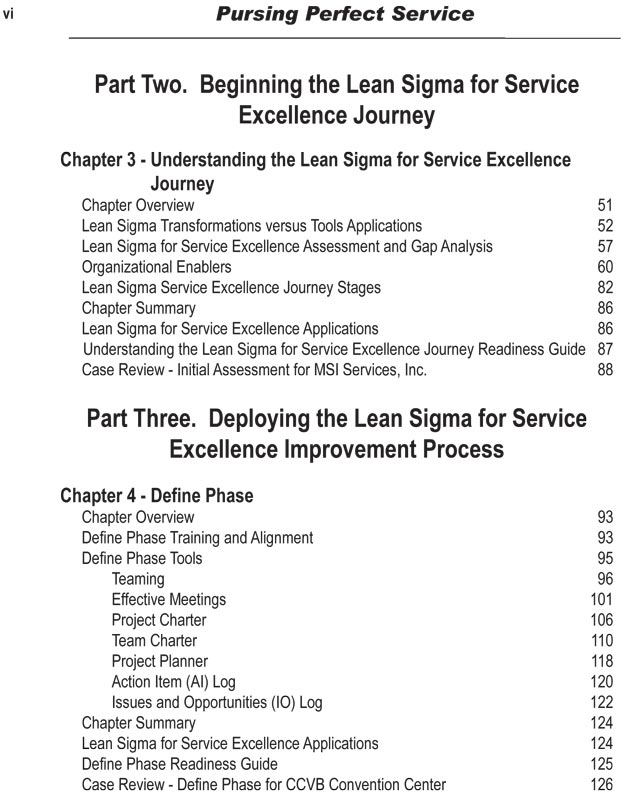
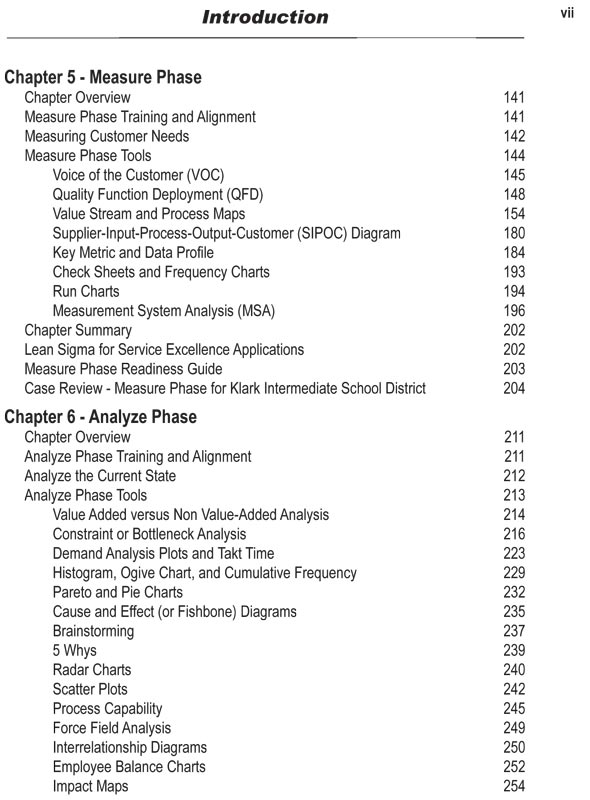
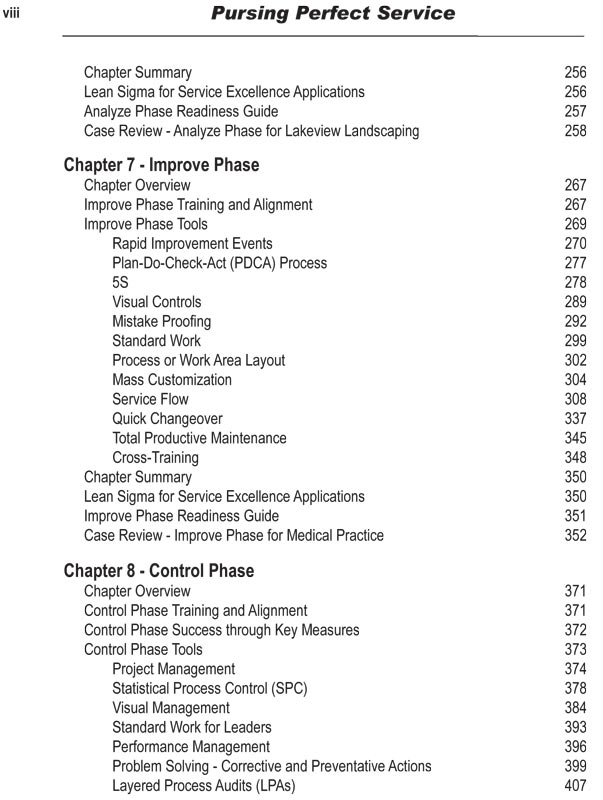
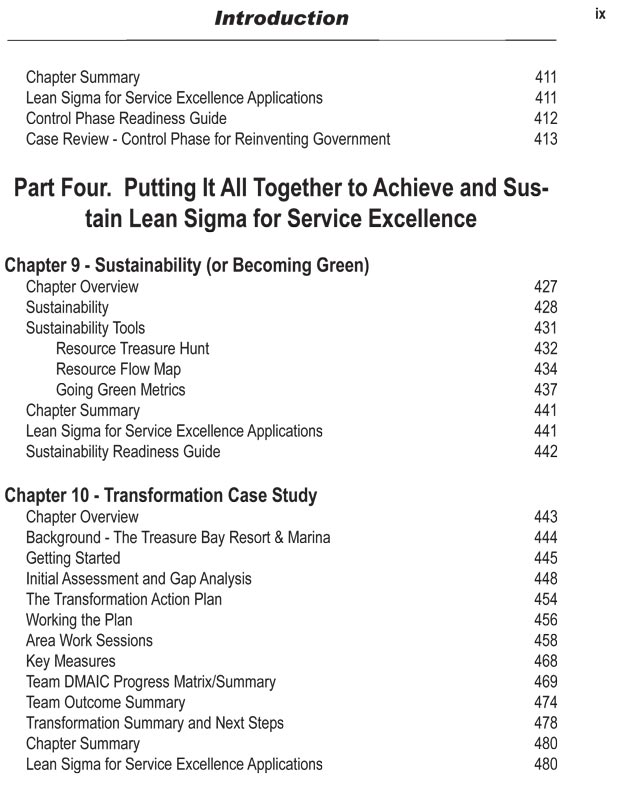
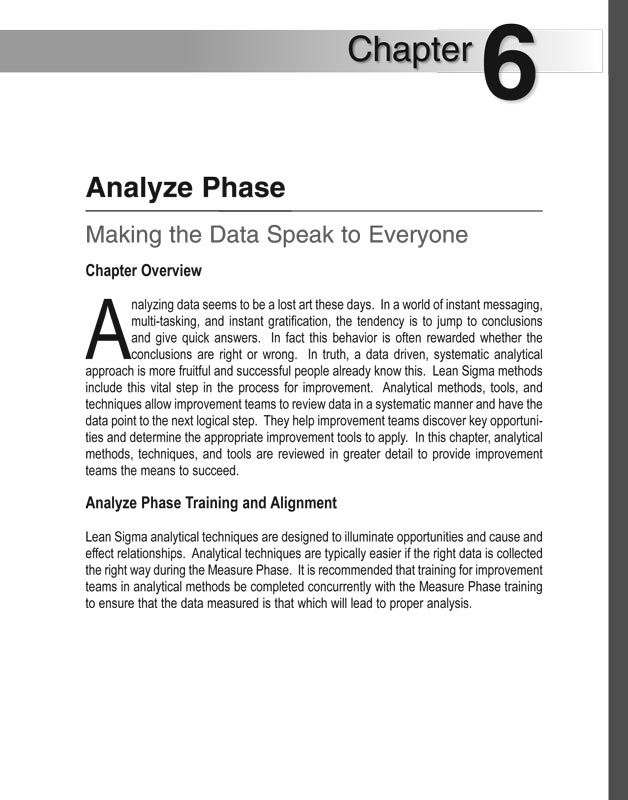
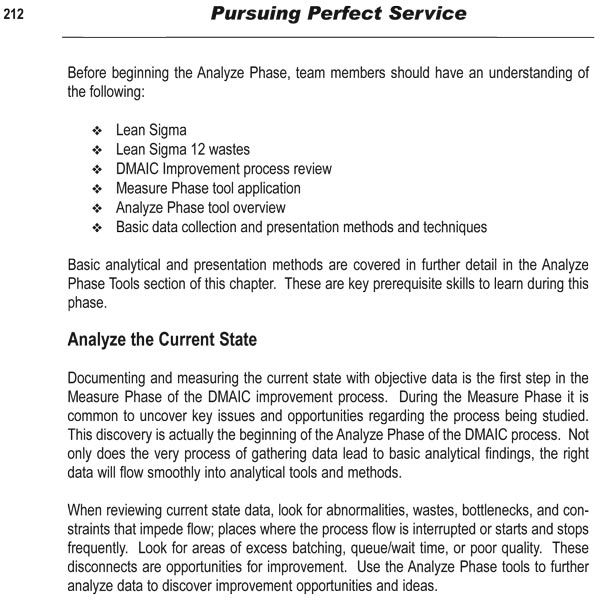
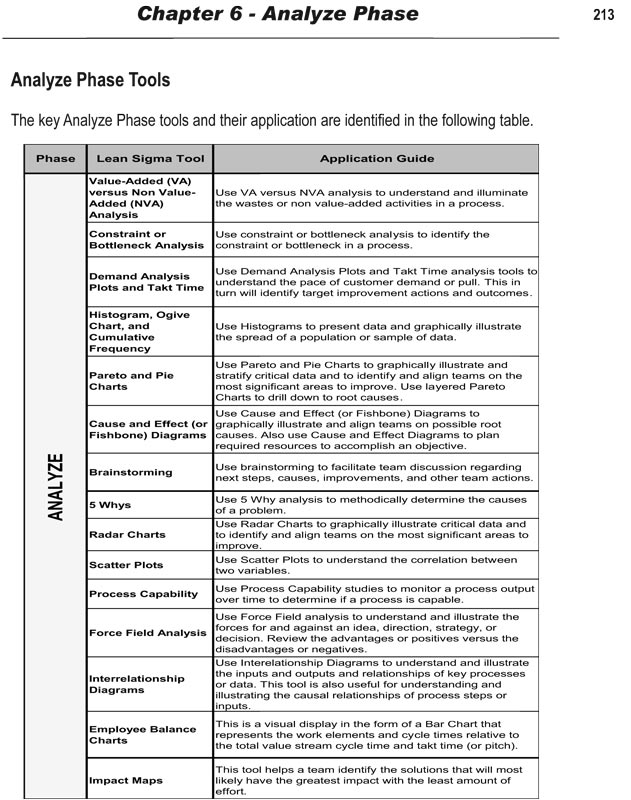
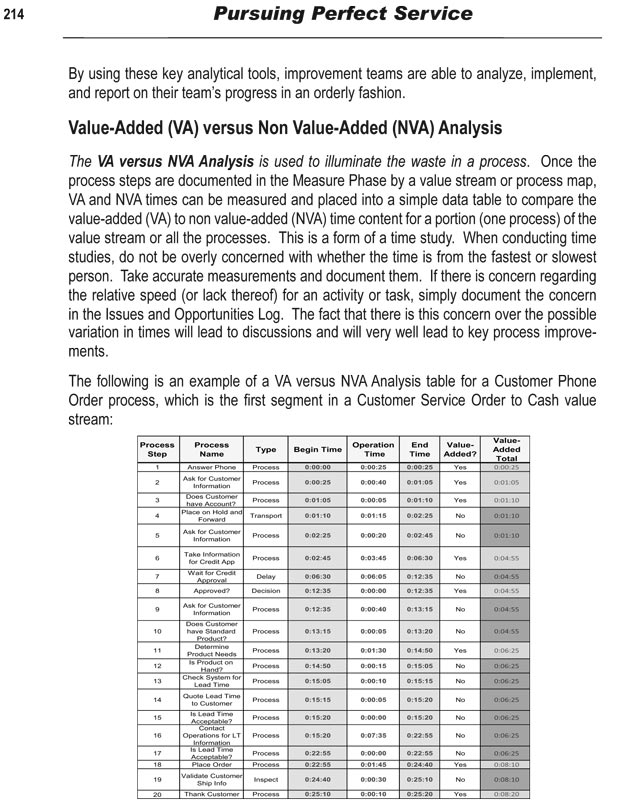
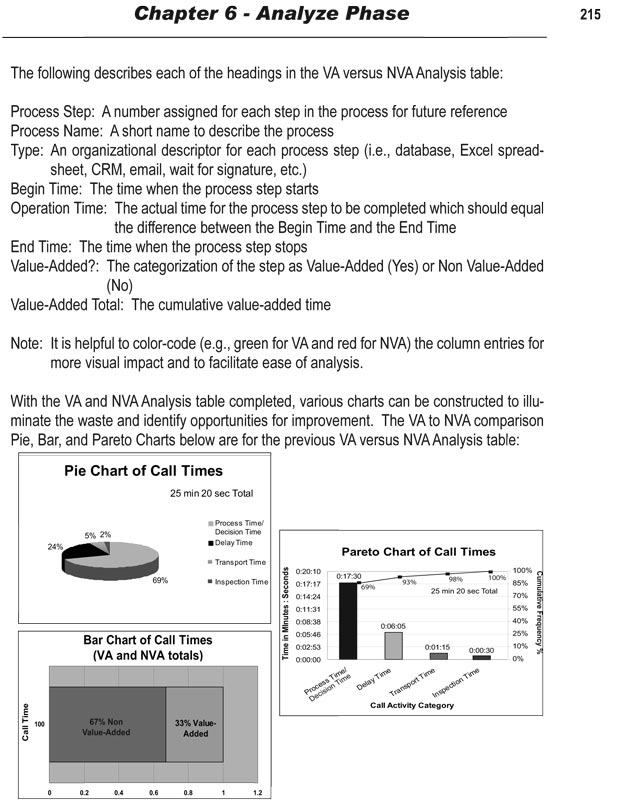
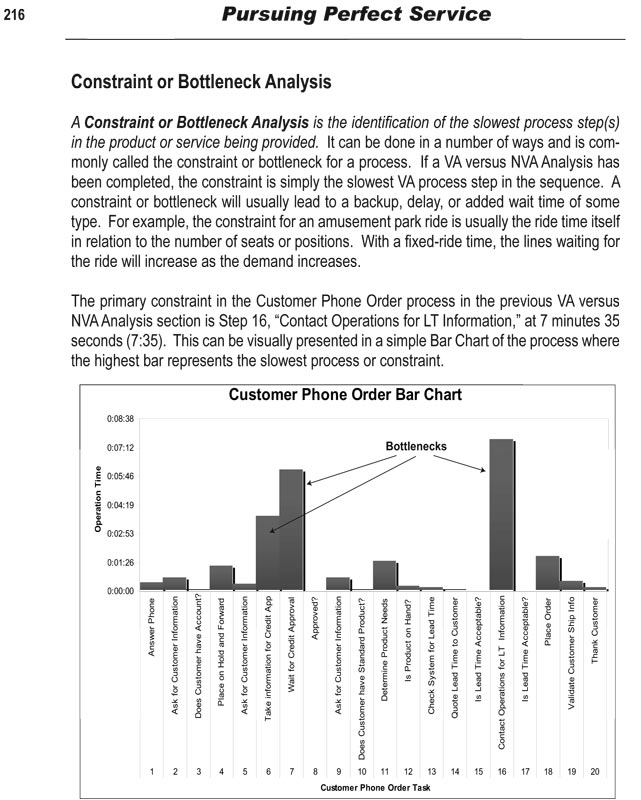
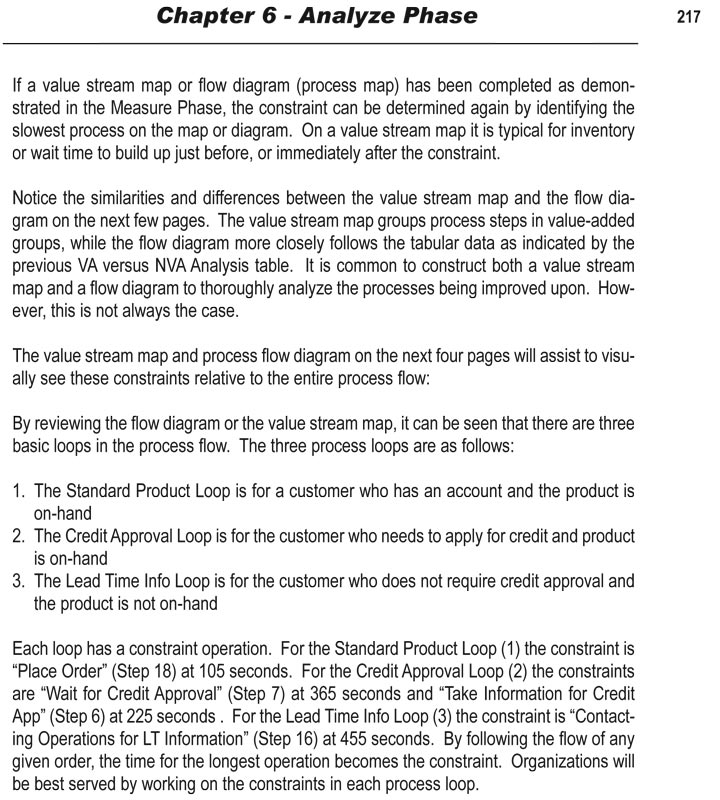
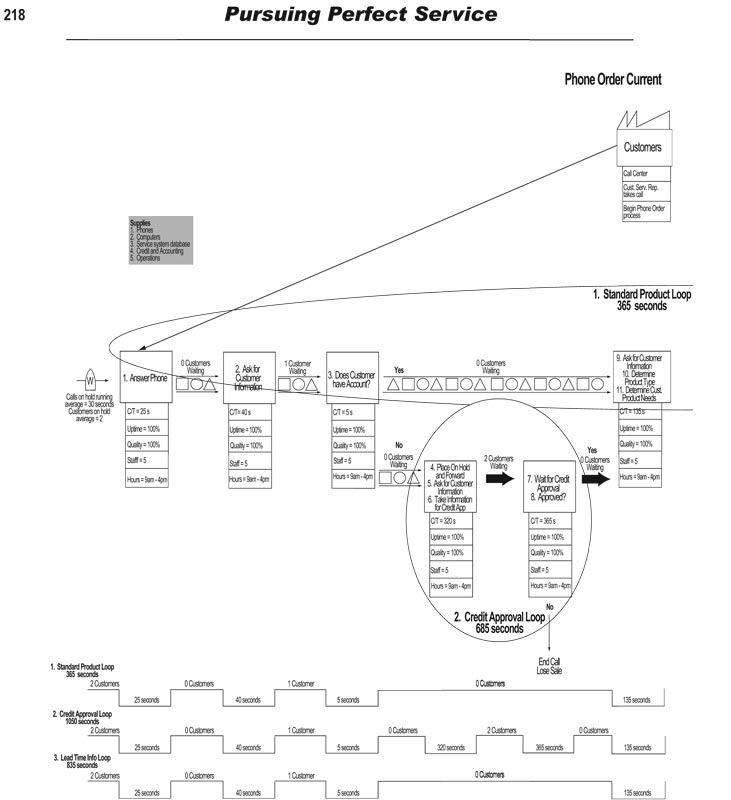

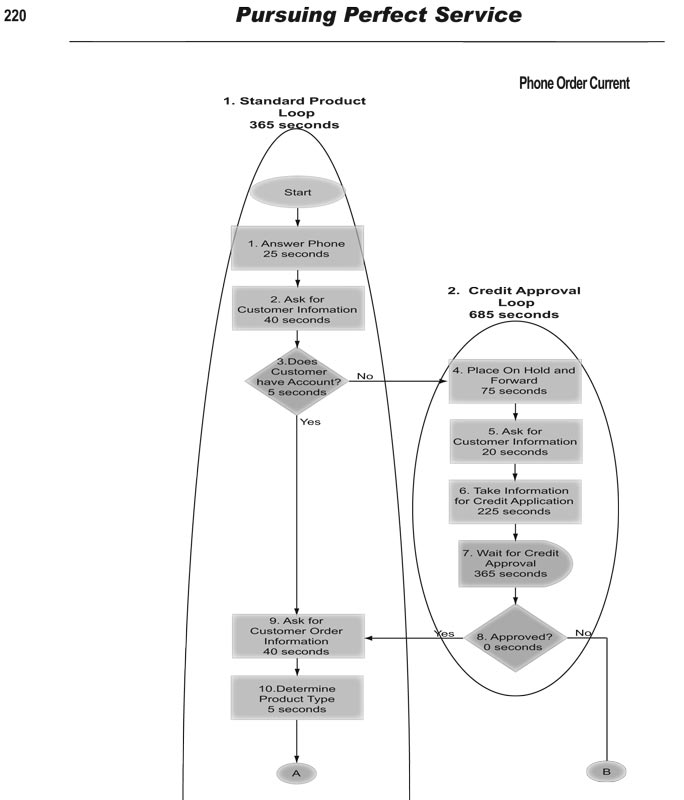
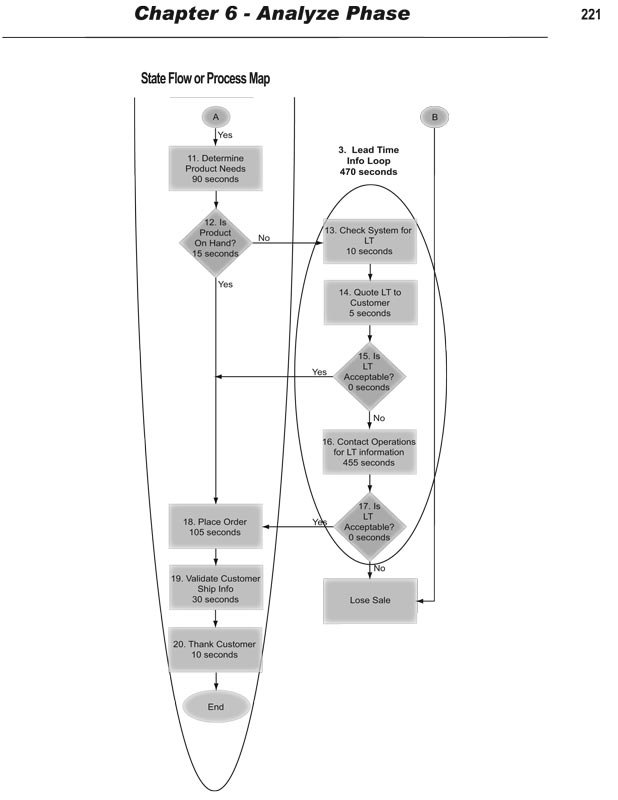
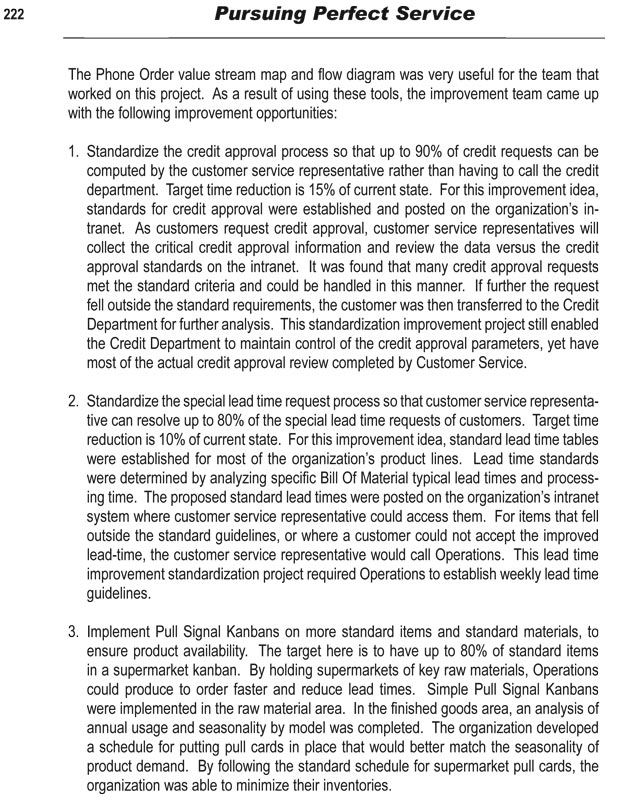
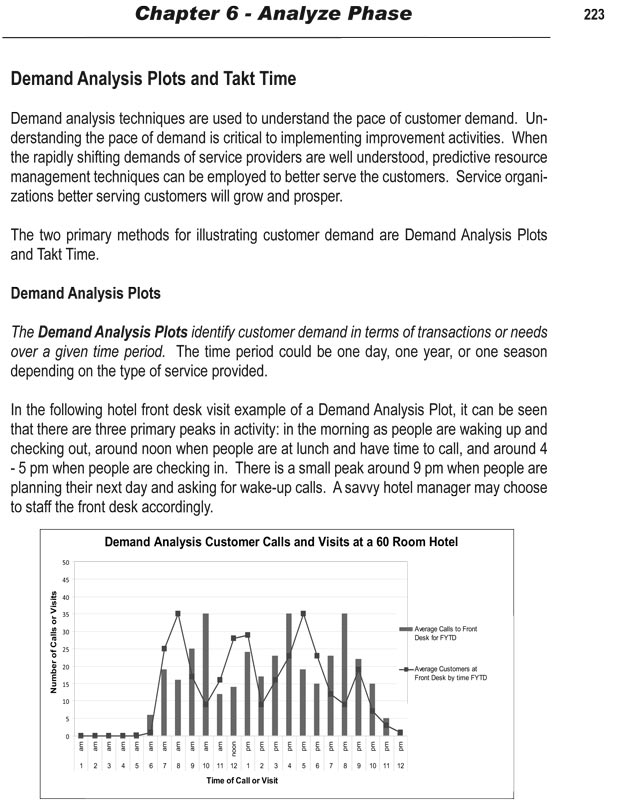
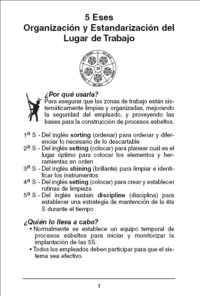

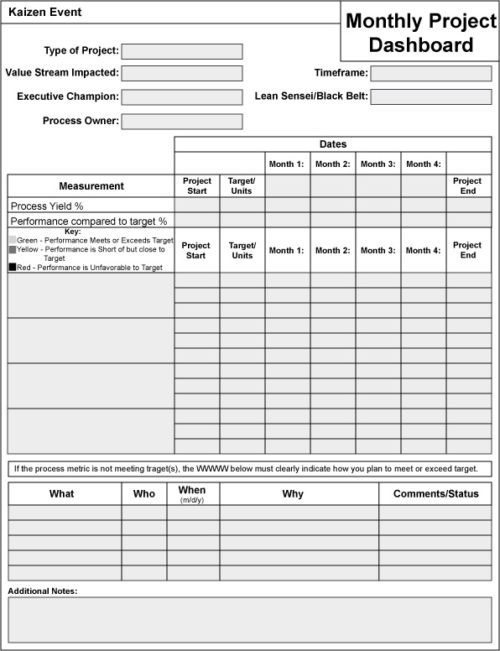

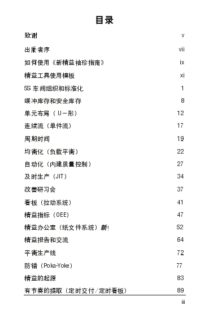

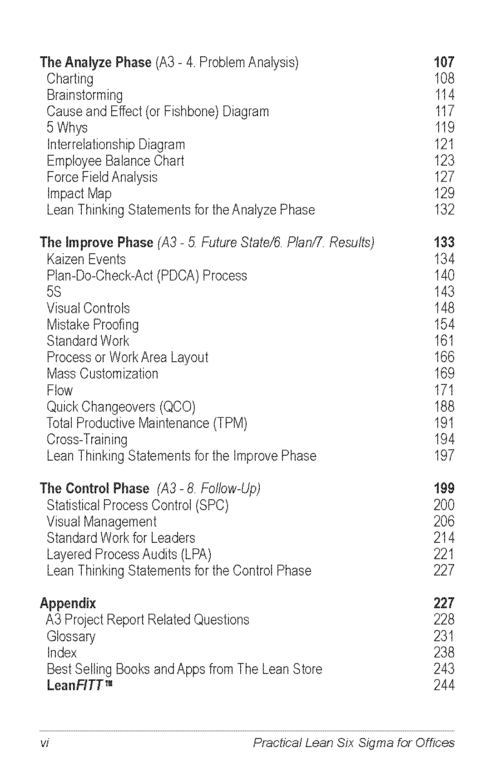
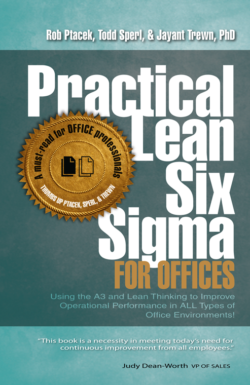
Reviews
There are no reviews yet.